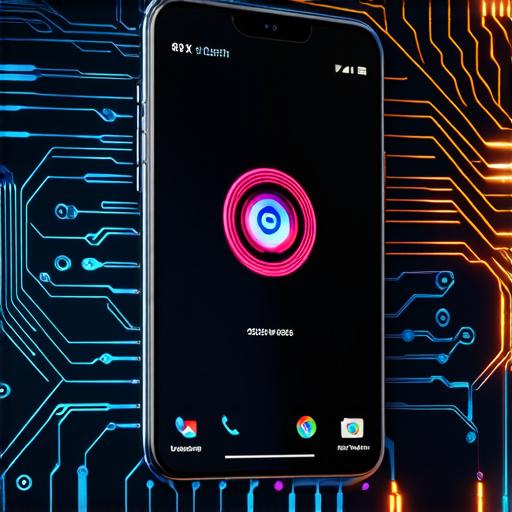
Unreal Engine, a popular game development engine, has recently gained popularity among mobile app developers for its versatility and advanced features. In this article, we will delve into the capabilities of Unreal Engine in mobile app development, including its benefits, challenges, and best practices. We will also provide real-life examples and case studies to illustrate how Unreal Engine has been successfully used in mobile app development.
Introduction
Mobile apps have become an essential part of our daily lives, providing us with a wide range of functionalities and features. As the demand for mobile apps continues to grow, developers are constantly seeking new and innovative ways to create engaging and immersive user experiences. Unreal Engine, a widely used game development engine, is gaining popularity among mobile app developers due to its versatility and advanced features.
Benefits of Using Unreal Engine in Mobile App Development
1. Realistic Graphics and Visual Effects
Unreal Engine is known for its ability to produce realistic graphics and visual effects. It uses advanced rendering techniques, such as physically-based lighting and real-time ray tracing, to create stunning visuals that are indistinguishable from reality. This makes Unreal Engine an excellent choice for mobile apps that require high-quality graphics and visual effects, such as gaming or augmented reality (AR) apps.
2. Cross-Platform Development
Unreal Engine supports cross-platform development, allowing developers to create mobile apps that can run on both iOS and Android devices. This saves developers time and resources, as they only need to develop the app once and deploy it across multiple platforms. Additionally, Unreal Engine provides a unified codebase for all platforms, making it easier to maintain and update the app in the future.
3. Advanced Features and Functionality
Unreal Engine offers advanced features and functionality that are not available in other mobile app development engines. For example, it includes built-in support for virtual reality (VR), AR, and mixed reality (MR) technologies, allowing developers to create immersive experiences that engage users on a whole new level. Additionally, Unreal Engine provides a wide range of plugins and tools for developers to extend the functionality of their apps, including social media integration, analytics, and monetization options.
4. Large Community Support
Unreal Engine has a large and active community of developers who contribute to its open-source codebase and provide support through online forums and tutorials. This makes it easier for developers to learn and use Unreal Engine, as they can find answers to their questions and receive help from other experienced developers.
Challenges of Using Unreal Engine in Mobile App Development
1. Complexity and Learning Curve
Unreal Engine is a complex and powerful tool that requires a steep learning curve for developers who are new to game development. While there are many tutorials and resources available online, mastering all the features and functionalities of Unreal Engine can take a significant amount of time and effort.
2. Performance Issues
Unreal Engine is designed for high-end gaming and can be resource-intensive, especially when running on low-end devices or networks. This can lead to performance issues, such as lag and stuttering, which can negatively impact the user experience.
3. Cost and Licensing Issues
Unreal Engine is a paid tool, with a license fee of $199 per user per year. While there is a free version available for personal use, commercial applications require a paid license. Additionally, Unreal Engine has strict licensing restrictions, such as limits on the number of users and devices that can access the app.
Best Practices for Using Unreal Engine in Mobile App Development
1. Plan Your Project Carefully
Before starting your project, it is essential to plan carefully and consider all the requirements and constraints of your app. This includes determining the target audience, platform, features, and performance requirements. Additionally, developers need to ensure that their app complies with all applicable regulations and standards, such as data privacy and security.
2. Optimize Your App for Performance
To avoid performance issues, developers need to optimize their apps for speed and efficiency. This includes minimizing the use of resource-intensive features, reducing the number of textures and assets used in the app, and implementing techniques such as occlusion culling and LOD (Level of Detail) to improve performance on low-end devices.
3. Use Plugins and Tools Wisely
Unreal Engine provides a wide range of plugins and tools for developers to extend the functionality of their apps. However, it is essential to use these tools wisely and only when necessary, as they can add complexity and increase the loading time of the app. Additionally, developers need to ensure that any third-party plugins and tools used in their app comply with Unreal Engine’s licensing restrictions.
4. Test and Iterate Your App
Testing is a crucial part of the app development process, and developers need to test their apps thoroughly on all platforms and devices to ensure they work correctly and provide a good user experience. Additionally, developers should iterate on their app based on user feedback and continuously improve it to meet the changing needs and preferences of their target audience.
Real-Life Examples and Case Studies
1. Pokémon GO
Pokémon GO is a popular augmented reality (AR) game that was developed using Unreal Engine. The game was launched in 2016 and quickly became a worldwide phenomenon, with millions of users downloading the app and playing it on their smartphones. Pokémon GO used Unreal Engine’s advanced AR capabilities to create an immersive gaming experience that allowed users to explore their surroundings and catch virtual creatures.
2. Ingress
Ingress is another AR game that was developed using Unreal Engine. The game was launched in 2013 and has since become one of the most popular AR games in the world, with millions of users playing it on their smartphones. Ingress uses Unreal Engine’s advanced AR capabilities to create a unique and engaging gaming experience that encourages players to explore their surroundings and interact with other users.
3. The Clash of Clans
The Clash of Clans is a popular mobile game that was developed using Unreal Engine. The game was launched in 2012 and has since become one of the most successful mobile games in the world, with millions of users downloading it and playing it on their smartphones. The Clash of Clans uses Unreal Engine’s advanced graphics and visual effects capabilities to create a stunning gaming experience that keeps players engaged for hours.
4. Tilt Brush
Tilt Brush is a virtual reality (VR) painting app that was developed using Unreal Engine. The app was launched in 2016 and has since become one of the most popular VR apps in the world, with millions of users downloading it and using it to create digital paintings in a virtual environment. Tilt Brush uses Unreal Engine’s advanced graphics and visual effects capabilities to create a realistic and immersive painting experience that allows users to explore their creativity.
Conclusion
Unreal Engine is a powerful and versatile tool that can be used for mobile app development, but it requires careful planning, optimization, and testing to ensure it delivers the desired results. While there are challenges associated with using Unreal Engine, such as complexity and cost, the benefits of using this tool, such as advanced graphics and visual effects capabilities and a vast community of developers and users, make it a popular choice for mobile app development.



